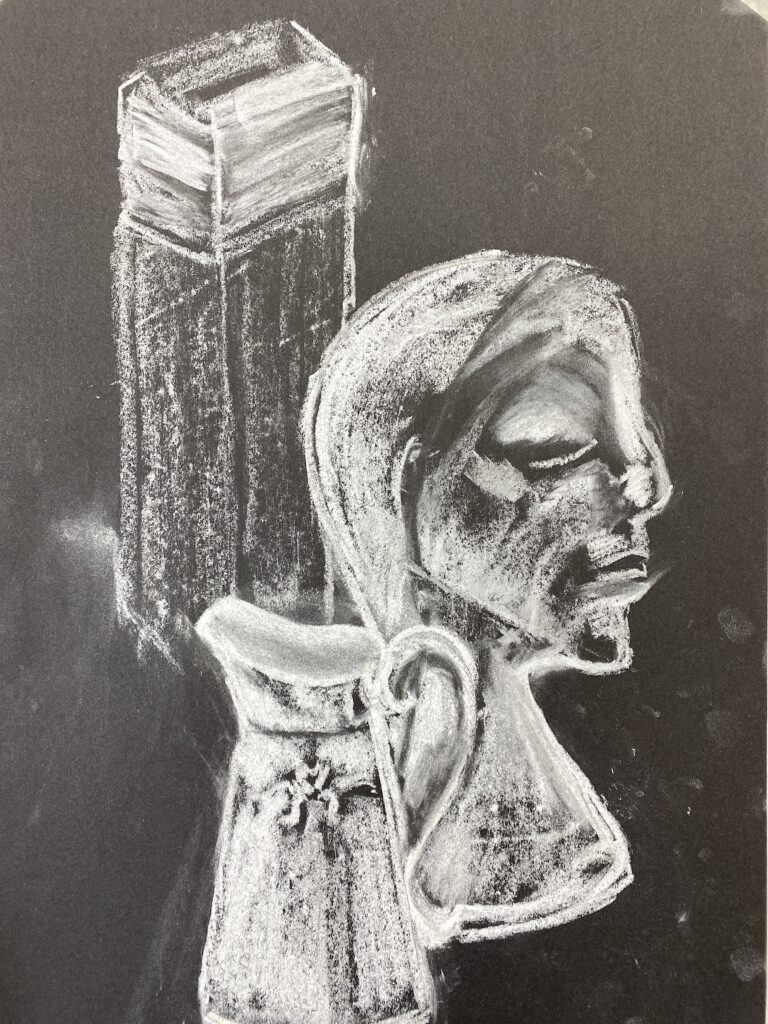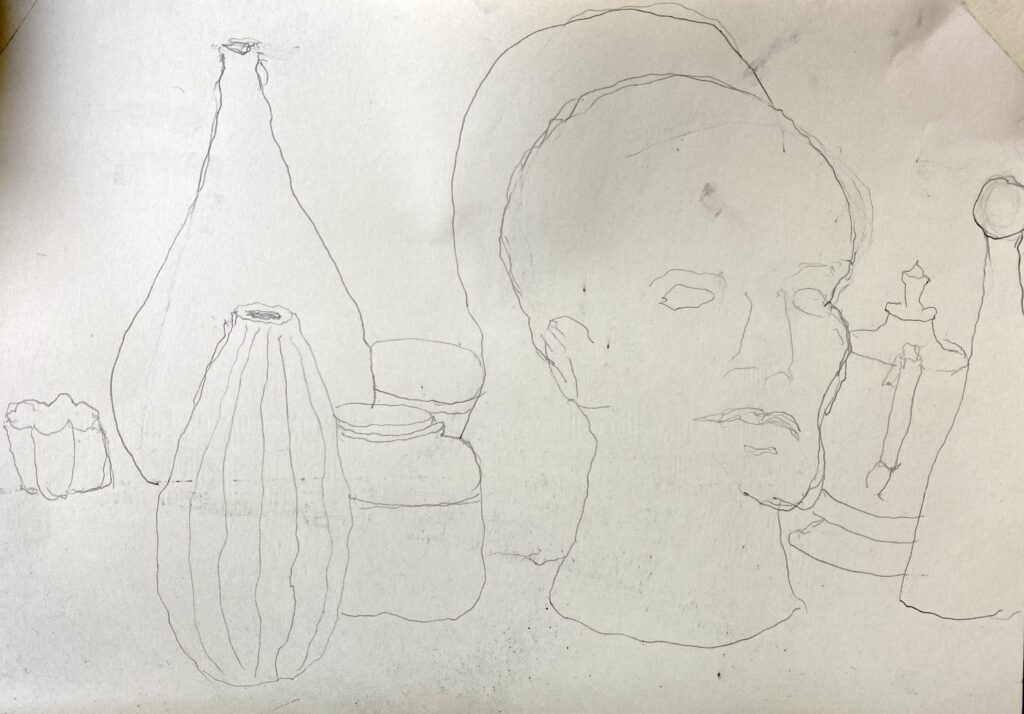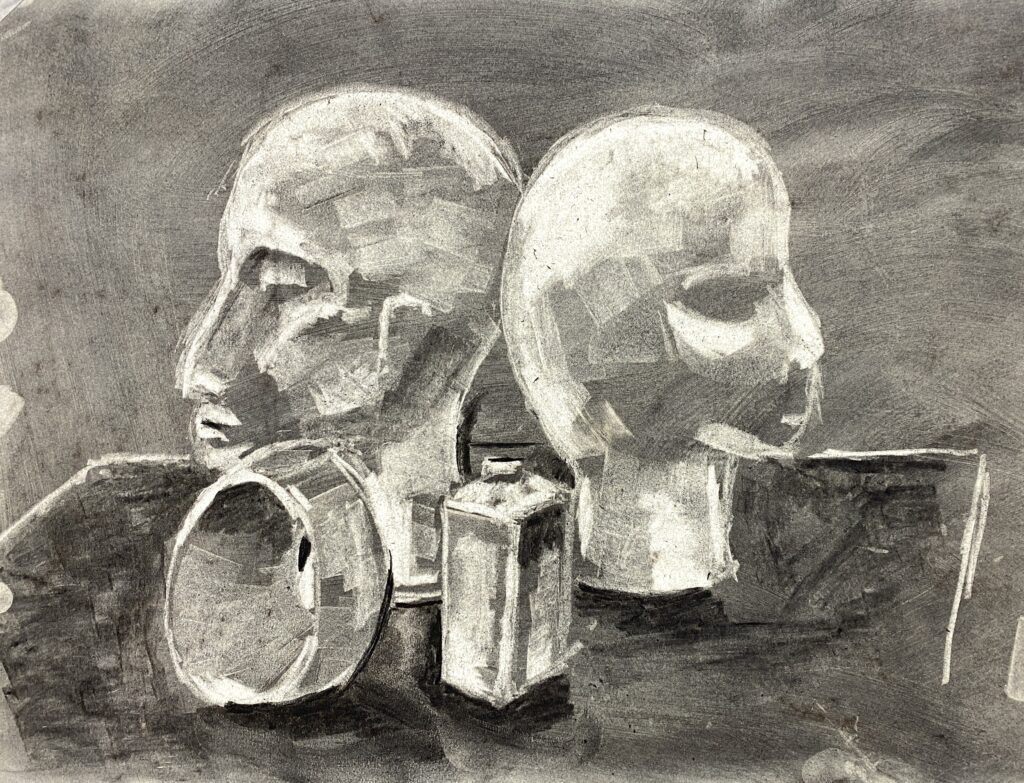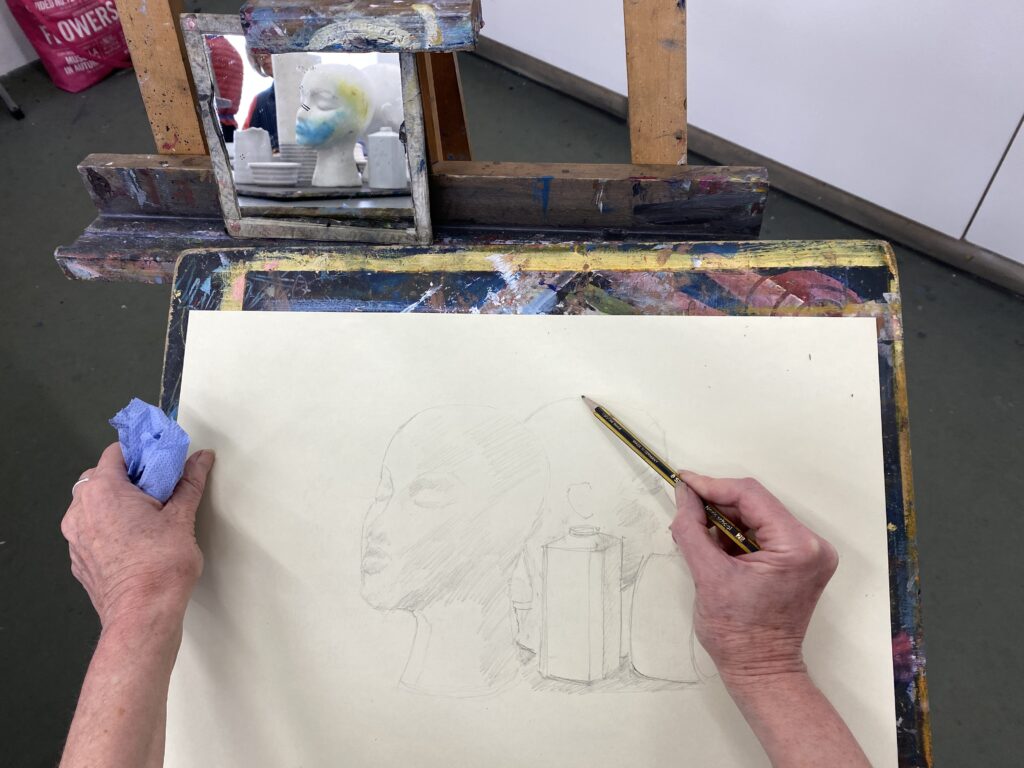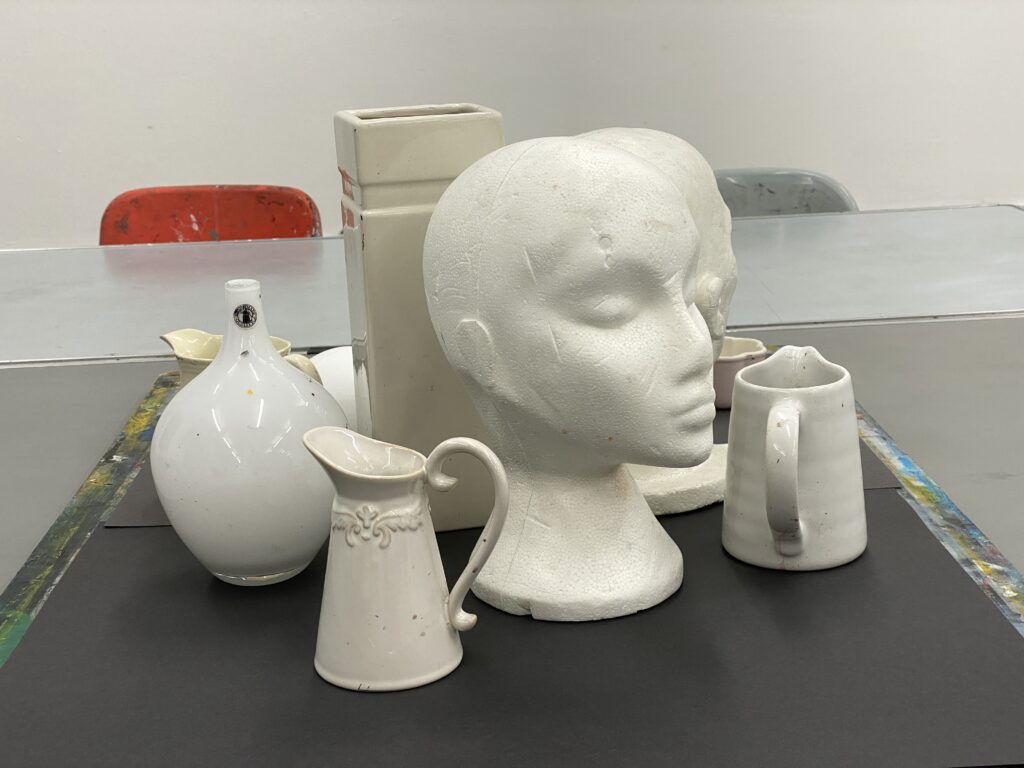
Update: Students work added below.
I’m looking forward to starting teaching again next week. To warm my students up after the long break, I’ll be challenging them with some ‘observational drawing circuit training’; making fast drawings and paintings from different views of the large still life arrangements set up in the room. The theme will be, ‘In Reverse’, working in ways that are the opposite to those that might be expected; I’m thinking of activities like drawing with a rubber to remove charcoal, using white on black, working from the reflection of the still life in a mirror and working with the less dominant hand.
I remember, during my second year of art school in Bristol, helping to deliver the Drawing Olympics to year one students at Bristol Museum. The Drawing Olympics were a series of unusual, short, fun drawing exercises which challenged students to respond to artefacts in the museum in unconventional ways. Many of the activities were similar to those in the well known book, ‘Drawing on the right side of your brain‘ by Betty Edwards.
If you are interested in investigating drawing techniques, there are good collections of exercises in Charles Williams’ book ‘Basic Drawing’ and the recently updated ‘Drawing and Painting‘ by Kate Wilson . If you are looking for a thought provoking book about developing a drawing style, Peter Blegvad’s book, Imagine Observe Remember, is fascinating.
In terms of investigating still life further, there was a good article by Rachel Cooke in Sunday’s Observer, running through some of the work in the exhibition; The Shape of Things: Still life in Britain, held at Pallent House Gallery in Chichester. Pallent House is one of the many excellent galleries on the south east coast of England which I listed in this blog some time back.
Finally, don’t forget that there’s a growing archive of learning resources on my website. To find more on the subject, just select ‘still life’ in the dropdown category menu.
Example of students work:
